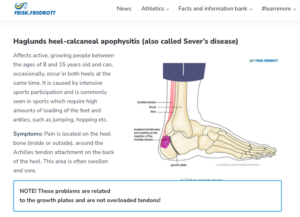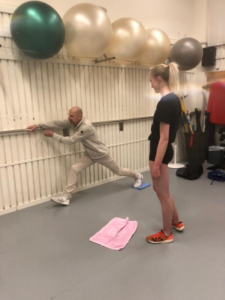Authors: Jenny Jacobsson, Jan Kowalski, Toomas Timpka, Armin Spreco, Per-Olof Hansson and Örjan Dahlström. The Athletics Research Center, Linköping University, Linköping, Sweden.
Contact: jenny.jacobsson@liu.se
Twitter: @Jenny_Jacobsson
We present here an overview of our randomized control trial published in BJSM on providing health and training information adjusted for youth athletics (track and field) via a digital health platform.
Why is this study important?
Athletics (track and field) is globally the most popular individual sport and most children worldwide have at some point competed through their school or sports club in running, jumping or throwing. However, about 40 to 80 percent of children who continue to participating in organized athletics training sustain a new injury during a season and 65 to 95 percent of these injuries are related to overuse. It has been reported that the injuries are associated with a broad scope of mechanisms, ranging from training load and running shoes (spikes) to growth and sleep. In addition, athletes often train in groups mixed regarding gender and of various ages, where individual youth injury risk across these groups can vary greatly over time.
Digital platforms provide opportunities to efficiently reach youth sports practitioners at the grassroots level, particularly parents and coaches, with well-aligned information that supports the development of safe sport practices. Our aim with the study was to examine if we could reduce the incidence of new injuries among youth athletes aged 12-15 years during one outdoor season in athletics by making scientific and evidence-based knowledge about training and health accessible on a digital health platform.
How did the study go about this?
The structure and organization of athletics clubs varies considerably in Sweden, e.g., having a primary focus on child/youth or elite athletes and whether parents and older peers are employed as youth coaches. Participating clubs were therefore stratified and randomized according to club type into the intervention or control group.
The health safeguarding approach we used in the study, universal prevention, aims to prevent the occurrence of a defined health problem by providing a population with the information and skills needed to prevent the problem on their own. Parents, coaches and their associated youth athletes in the intervention group were given access to the digital health platform via a password-protected interface. During the 4-month youth athletics season they were encouraged to take part of the digital health platforms content and suggestions on topics to read were provided. The parents in both groups returned training and injury data together with the youth athletes every 2 weeks. Figure 1 shows an example of the content displayed in the digital health platform.
Figure 1 Screenshot, example of the digital health platform content (a common injury in child/youth)

What did the study find?
We found that the injury incidence was significantly lower (hazard ratio [HR], 0.62; χ2, 3.865; p=0.049) amongst the youth athletes that were in the intervention group with access to the digital health platform compared to the control group. The results also revealed that the median time to the first injury in the intervention group was 16 weeks compared with 8 weeks in the control group. In addition, we observed an interaction effect between the intervention and the stratification factor (club size) suggesting that the effectiveness of the intervention was superior in large clubs. The efficacy of the intervention was stronger in large clubs (HR 0.491 (95% CI 0.242 to 0.998); p=0.049).
Figure 2 Screenshot, example of the digital health platform content (evidence based rehab protocol for hamstrings injuries)

What are the key take-home points?
Applying one-size-fits-all prevention strategies has proved challenging in child and youth sports. Our results provide insights into possibilities for injury prevention that can be translated to and implemented in large sports organizations and their grassroot networks, e.g. clubs and social media groupings. These social systems consist of multiple components that interact and change in accordance with the current societal environment.
Universal prevention strategies based on distribution of age-adjusted health information via digital platforms can be recommended for implementation in youth sports. Further studies of universal prevention based on digital platforms in youth sports using suitable experimental designs are warranted.